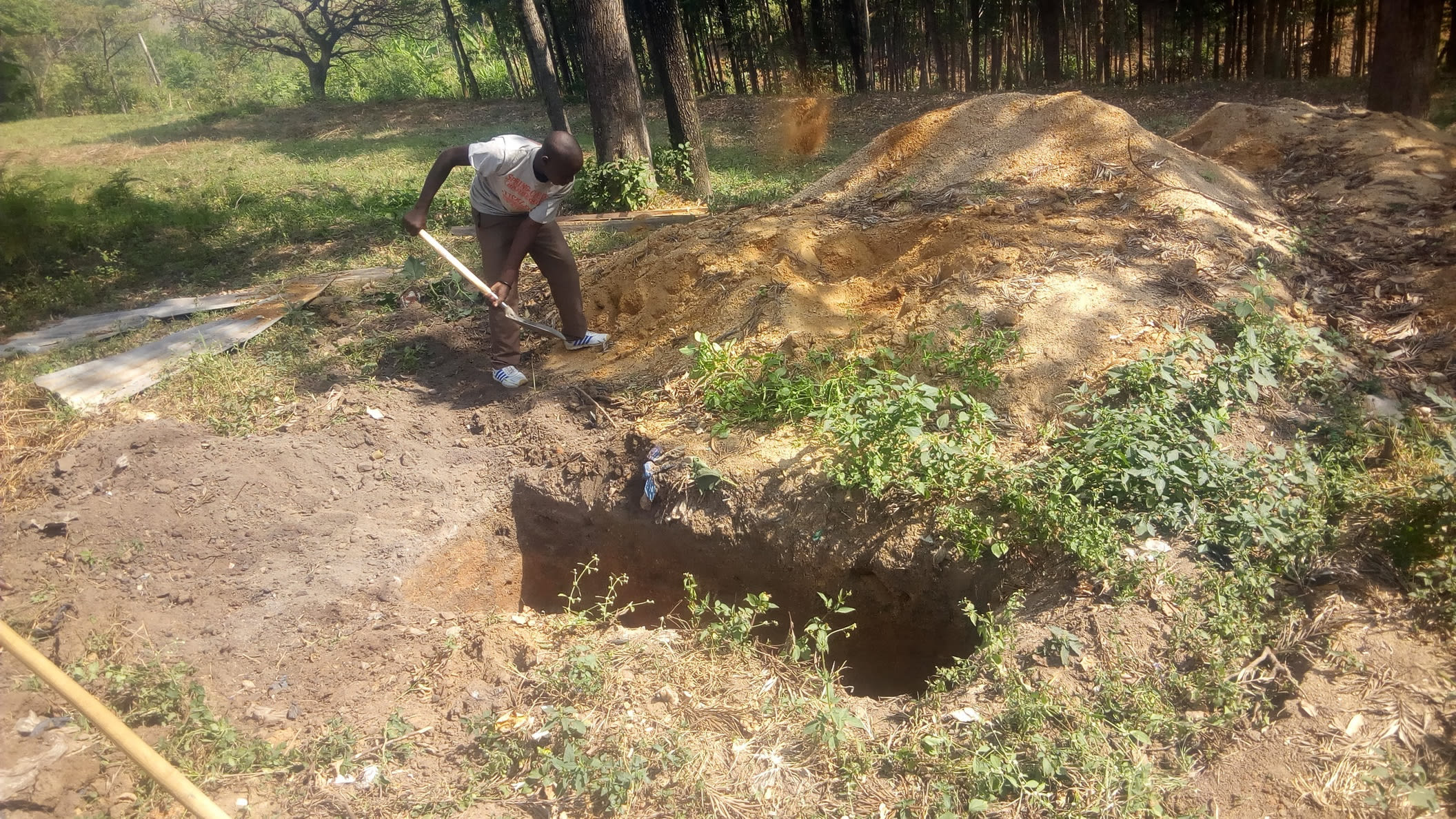This project is a part of our shared program with Western Water And Sanitation Forum (WEWASAFO). Our team is pleased to directly share the below report (edited for clarity, as needed).
Welcome to the School
Eshisiru Secondary School was opened in 1986 by Mr. Josphat Khalumi, a local official who was formerly a teacher. At that time, he noted that this area only had two secondary schools; one boys' school and one girls' school. He became the major donor to get this school up and running, and it's been growing every since. It now has a total enrollment of 430 students who are taught by 19 teachers. The school also employs 11 support staff.
A normal day usually begins at 6:30am with the arrival of students, teachers and the support staff. Students start with morning study hall before they break into groups for cleaning chores. Normal classes begin at 8:10am with 10-minute breaks in between. Afternoon classes are from 2-4pm, after which students break for clubs or sports. This lasts for one hour and then everyone leaves for home.
Water Situation
The school has two small plastic tanks that they completely rely on for all of their water needs. These tanks are connected to a gutter line along the nearby roof. The water is drawn and then rationed for drinking, cooking, and cleaning. Since these containers are so small, they empty quickly when it doesn't rain. In these cases, teachers send their students out into the surrounding communities to find water.
Teachers report that students often don't return to school that day when they're sent out the gate. A lot of academic opportunity is lost for these students as they worry about finding the water needed to stay in school.
Sanitation Situation
"Our students have many times complained of stomachache, and I suppose this could be because we don't practice hand-washing due to shortage of water," admitted Deputy Principal Edward Airo.
The latrines that the school currently has are in bad shape. Some of the pits are almost full, and doors are falling off.
Plans: Hygiene and Sanitation Training and Hand-Washing Stations
Training will be held for two days. The facilitator will use PHAST (participatory hygiene and sanitation transformation), ABCD (asset-based community development), CTC (child to child), lectures, group discussions, and handouts to teach health topics and ways to promote good practices within the school. The CTC method will prepare students to lead other students into healthy habits, as well as kickstart a CTC club for the school. This CTC club will oversee the new facilities, such as hand-washing stations, and make sure they are kept clean and in working condition. The two hand-washing stations will be delivered to the school, and the club will fill them with water on a daily basis and make sure there is always a cleaning agent such as soap or ash.
Plans: VIP Latrines
Two triple-door latrines will be constructed with local materials that the school will help gather. Three doors will serve the girls while the other three serve the boys. And with a new source of water on school grounds, students and staff should have enough to keep these new latrines clean.
Plans: Rainwater Catchment Tank
A 50,000-liter rainwater catchment tank will help alleviate the water crisis at this school. The school will also help gather the needed materials such as sand, rocks, and water from the spring for mixing cement. Once finished, this tank can begin catching rainfall that will be used by the school’s students and staff. Students will no longer be sent out in search of water when the small supply at the school runs dry.
We and the school strongly believe that with this assistance, standards will significantly improve. These higher standards will translate to better academic performance!

 Rainwater Catchment
Rainwater Catchment
 Rehabilitation Project
Rehabilitation Project















 VIP Latrines
VIP Latrines

















